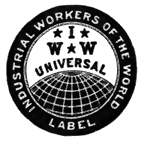New Intermediate Technology
Via Progressive Review. An intriguing development in human-scale power and water technology for the Third World, from the inventor of the Segway:
BUSINESS 2. 0 - Dean Kamen, the engineer who invented the Segway, is puzzling over a new equation these days. An estimated 1.1 billion people in the world don't have access to clean drinking water, and an estimated 1.6 billion don't have electricity. Those figures add up to a big problem for the world—and an equally big opportunity for entrepreneurs. To solve the problem, he's invented two devices, each about the size of a washing machine that can provide much-needed power and clean water in rural villages.
"Eighty percent of all the diseases you could name would be wiped out if you just gave people clean water," says Kamen. "The water purifier makes 1,000 liters of clean water a day, and we don't care what goes into it. And the power generator makes a kilowatt off of anything that burns." . . .
The electric generator is powered by an easily-obtained local fuel: cow dung. Each machine continuously outputs a kilowatt of electricity. That may not sound like much, but it is enough to light 70 energy-efficient bulbs. As Kamen puts it, "If you judiciously use a kilowatt, each villager can have a nighttime."









3 Comments:
Note, however, that this isn't a true appropriate technology because it greatly increases nitrate losses from burning valuable manure. There is also some phosphate loss in particles carried off in the smoke (though that is curable and probably negligible anyway).
Good point. But it's also possible to replenish nitrogen, at relatively low cost, through green manuring.
While accurate as far as it goes, that cost is real and avoidable. The thing is, the feedstock is green, growing stuff; what works far better is dead wood and other low nutrient matter, from which biological processes have already retrieved what they can. This has to do with my personal preference for engineering out requirements rather than putting in fixes for them (not at the end user level, of course, just in terms of means towards ends).
Post a Comment
<< Home